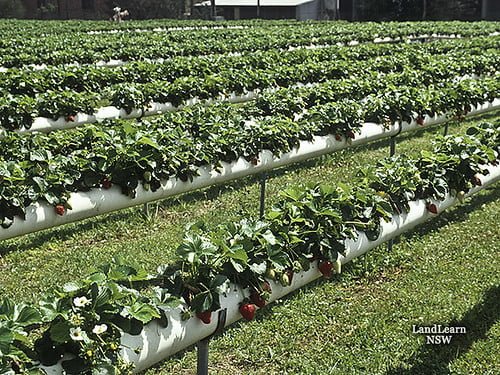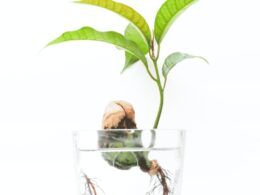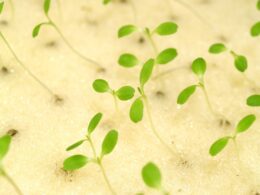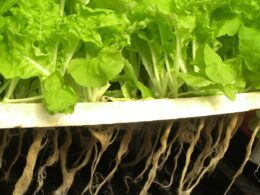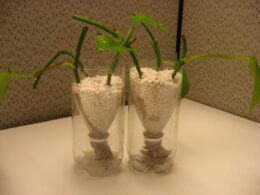Are you interested in growing plants without soil? Hydroponic systems offer an efficient and space-saving way to cultivate plants indoors or outdoors. However, like any gardening method, hydroponics has its fair share of challenges.
In this article, we will explore three common issues that occur in hydroponic systems and provide tips on how to address them.
Firstly, pH management is crucial in hydroponics. pH measures the acidity or alkalinity of the nutrient solution that the plants are growing in. If the pH is too high or too low, the plants may suffer from nutrient deficiencies or toxicities. Monitoring and adjusting the pH regularly is essential for healthy plant growth. However, this can be a daunting task for beginners, as it requires a basic understanding of chemistry.
In the next section, we will discuss how to manage pH in hydroponic systems.
pH Management
Let’s dive into the importance of managing the pH levels in your hydroponic setup. One of the most common issues in hydroponic systems is improper pH monitoring. It’s essential to maintain the right pH levels in your nutrient solution because it directly affects your plants’ growth and development. If the pH level is too high or too low, your plants won’t be able to absorb the nutrients they need.
pH monitoring is crucial to ensure that your nutrient solution is well-balanced. You can use pH testing kits to check your solution’s pH levels regularly. If you notice that the pH level is too high or too low, you can adjust it by adding either pH up or pH down solutions.
It’s important to remember that pH levels can fluctuate due to different factors like temperature and the type of plants you’re growing, so you need to monitor it regularly.
Maintaining the proper pH levels in your hydroponic setup is essential for healthy plant growth. By monitoring and adjusting your nutrient solution’s pH levels, you can ensure that your plants are getting the nutrients they need to thrive. So, make sure to keep an eye on your pH levels regularly to avoid any growth issues that might arise from improper pH management.
Nutrient Imbalances
You might experience nutrient imbalances if you don’t carefully monitor the nutrient levels in your hydroponic setup. Nutrient solution is the lifeblood of your plants, and it’s important to make sure that your plants are getting the right balance of nutrients for their needs. If your nutrient solution is too strong or too weak, your plants could suffer from a range of issues, including stunted growth, yellowing leaves, or even death.
To avoid nutrient imbalances, make sure to test your nutrient solution regularly and adjust it as needed. One common issue that can arise from nutrient imbalances is root rot. When your plants are not getting the right balance of nutrients, their roots can become weak and susceptible to disease. Root rot is a condition where the roots of your plants start to decay, which can lead to wilting, yellowing leaves, and even death.
To prevent root rot, make sure to keep your nutrient solution well-aerated and at the right temperature. You can also use beneficial bacteria and fungi to help protect your plants from disease. Another potential issue with nutrient imbalances is that they can make your plants more susceptible to pests and diseases. When your plants are not getting the right balance of nutrients, their immune systems can become weakened, making them more vulnerable to attack.
This can be especially problematic in hydroponic systems, where pests and diseases can spread quickly through the water. To avoid this, make sure to keep your nutrient solution well-balanced and your plants healthy and strong. You can also use natural pest control methods, such as companion planting and beneficial insects, to help protect your plants from harm.
Disease and Pest Control
In this section, you’ll learn about the common diseases and pests that can affect your hydroponic system. You’ll also learn how to prevent and treat these issues to ensure the health and vitality of your plants.
Some of the most common diseases in hydroponic systems include root rot and powdery mildew. Common pests include spider mites and aphids.
Adjust the paragraph structure in the Input to logically group complete sentences on their own lines, with a double new line after. Don’t forget to use contractions!
Common Diseases in Hydroponic Systems
As you explore hydroponics, you may encounter common diseases that can pose challenges to your plants. One of these diseases is powdery mildew, which is caused by a fungus that thrives in high humidity and poor air circulation. This disease can spread quickly and cause your plants to have a white powdery coating on their leaves, which can lead to stunted growth and even death.
To prevent powdery mildew from attacking your plants, it’s important to maintain a low humidity level and ensure that there is proper air circulation. Early detection is also crucial, as removing infected leaves and treating the remaining plants with a fungicide can help stop the spread of the disease.
Another common disease in hydroponic systems is root rot, which is caused by a fungus that thrives in wet conditions. This disease can cause your plants to have brown or black roots that are slimy to the touch, and it can lead to wilting and death.
To prevent root rot, it’s important to ensure that your plants are not over-watered and that there is proper drainage in your system. Early detection is also crucial, as removing infected plants and treating the remaining plants with a fungicide can help prevent the spread of the disease.
By taking preventative measures and being vigilant about early detection, you can help ensure the health and safety of your hydroponic plants.
Prevention and Treatment of Diseases
Learn how to prevent and treat common diseases that can harm your hydroponic plants, ensuring their health and vitality. Here are some tips to keep in mind:
-
Keep your hydroponic system clean. Regularly clean and sanitize your system to prevent the buildup of harmful pathogens.
-
Monitor nutrient levels. Nutrient imbalance can lead to plant stress, making them more vulnerable to diseases. Make sure to check your nutrient levels regularly and adjust as needed.
-
Quarantine infected plants. If you notice any signs of disease, such as discoloration or wilting, immediately quarantine the affected plant to prevent the spread of the disease to other plants in your system.
-
Use disease-resistant varieties. Choose plant varieties that have been bred to resist common diseases in hydroponic systems. This can help minimize the risk of disease outbreaks in your system and make it easier to manage any issues that do arise.
By following these tips for disease prevention and nutrient management, you can help ensure the health and vitality of your hydroponic plants and enjoy a thriving garden.
Common Pests in Hydroponic Systems
You’ll want to keep an eye out for pests that may harm your plants, as they can quickly become a problem and affect the overall health and productivity of your garden. Some common pests in hydroponic systems include spider mites, aphids, and whiteflies.
These pests can cause damage by sucking the sap from plant leaves, transmitting diseases, and reducing the amount of light that reaches the plants. Prevention methods for these pests include regular monitoring of plants, maintaining a clean growing environment, and using natural pest control methods such as introducing beneficial insects like ladybugs or using organic pesticides.
It’s important to catch these pests early on and take action to prevent them from spreading to other plants in your system. By staying vigilant and implementing prevention methods, you can keep your hydroponic garden healthy and free from common pest species.
Prevention and Treatment of Pest Infestations
Now that you know about the common pests that can infest hydroponic systems, it’s important to learn how to prevent and treat them. Prevention is the key to keeping your plants healthy and pest-free.
There are several preventative measures you can take, such as using insect-repelling substances like neem oil or garlic spray, ensuring your growing area is kept clean and free of debris, and regularly inspecting your plants for signs of infestation. It’s also important to quarantine new plants before introducing them to your system to prevent any potential pests from spreading.
If you do find yourself dealing with a pest infestation, there are several natural remedies that can be effective in treating the problem. For example, ladybugs, lacewings, and praying mantises are all natural predators that can help control aphids, spider mites, and other common pests. You can also use organic pesticides like pyrethrin or insecticidal soap, which are less harmful to your plants and the environment than chemical pesticides.
Remember, prevention is always better than cure, so be sure to take steps to prevent pests from infesting your hydroponic system in the first place.
What Are Some Common Hydroponic Systems That Beginners Can Start With?
There are a few popular beginner hydroponic systems that aspiring gardeners can start with. One option is the wick system, which relies on a passive wick to deliver nutrient-rich water to the plant’s roots. Another option is the deep water culture system, where the plant’s roots are submerged in a nutrient solution. Lastly, beginners can try the nutrient film technique system, where a thin film of nutrient solution constantly flows over the plant’s roots.
System Maintenance
To keep your hydroponic garden thriving, it’s essential to regularly maintain and care for your setup. A significant issue that can occur in hydroponic systems is clogged pipes. This can happen due to the accumulation of mineral deposits and algae growth. To prevent this, it’s crucial to regularly flush your system with clean water and use a filter to prevent debris from entering the pipes.
Additionally, you should regularly check and clean your pumps to ensure they’re functioning correctly. Another issue that can occur in hydroponic systems is pH imbalance. This can cause nutrient deficiencies in your plants, leading to stunted growth and poor yields. To prevent this, you should regularly test your pH levels and adjust them as necessary using pH up or down solutions.
It’s also essential to keep an eye on the nutrient solution’s electrical conductivity (EC) levels, as high levels can cause nutrient burn and damage to your plants. Lastly, equipment failure can also occur in hydroponic systems. This can include malfunctioning pumps, timers, and lighting systems. To prevent this, it’s crucial to regularly check and maintain your equipment.
This includes cleaning and lubricating moving parts, replacing worn-out components, and calibrating your timers and pH meters. Regular maintenance can help prevent costly equipment failures and keep your hydroponic garden running smoothly.
Troubleshooting and Problem-Solving
When it comes to hydroponic systems, you may encounter some issues along the way. But don’t worry, there are techniques for identifying and addressing these issues.
You can troubleshoot on your own or seek help from experts or resources to get your system back on track.
Identifying and Addressing Issues
You’ll learn how to identify and solve common problems that can arise in your hydroponic setup. Hydroponic systems offer cost-effective solutions to traditional farming methods while reducing their environmental impact. However, certain issues can arise that can hinder your plants’ growth.
To address these issues, here are two nested bullet point lists to keep in mind:
-
Common problems
-
Nutrient deficiencies
-
pH imbalances
-
Temperature fluctuations
-
Pest infestations
-
Solutions
-
Monitor nutrient levels and adjust accordingly
-
Check pH regularly and adjust if necessary
-
Maintain a consistent temperature
-
Use integrated pest management techniques
By being aware of these common problems and solutions, you can effectively identify and address issues in your hydroponic system. Remember to regularly monitor your setup and make necessary adjustments to ensure the health and growth of your plants.
Troubleshooting Techniques
Now that you’ve identified the issues in your hydroponic system, it’s time to address them. But what if the issues persist? This is where troubleshooting techniques come in. By using these techniques, you can easily pinpoint the root cause of the problem and take the necessary steps to fix it.
One common issue that occurs in hydroponic systems is equipment malfunction. This can be caused by poor maintenance, wear and tear, or even incorrect installation. To troubleshoot this issue, start by checking all the equipment in your system. Look for any damages or signs of wear and tear. Also, make sure that all the equipment is properly installed and that there are no loose connections. If you find any issues, replace or repair the equipment as necessary.
Another issue that can occur is poor water quality. This can be caused by improper pH levels, nutrient deficiency, or even contamination. To troubleshoot this issue, start by testing the water quality using a water testing kit. Look for any abnormalities in the pH levels, nutrient levels, or any signs of contamination. Once you identify the problem, take the necessary steps to fix it. Adjust the pH levels, add nutrients if necessary, or even change the water if it’s contaminated.
By using these troubleshooting techniques, you can easily fix any issues that may arise in your hydroponic system and ensure that it’s running smoothly.
Seeking Help from Experts or Resources
If you’re feeling overwhelmed or unsure about how to address issues in your hydroponic system, don’t hesitate to seek help from experts or online resources.
Expert recommendations can come from local hydroponic stores or professionals who specialize in hydroponic systems. They can offer advice on techniques, products, and maintenance that can help you address any issues that arise.
Online resources can also provide valuable information and guidance as you troubleshoot your hydroponic system. You can find forums, blogs, and articles that discuss common problems and solutions, as well as step-by-step guides and videos.
By using these resources, you can gain a better understanding of hydroponics and become more confident in your ability to maintain a healthy and thriving system.
Remember, seeking help from experts or resources is a smart and proactive approach to addressing any issues that may occur in your hydroponic setup.
Frequently Asked Questions
What are the benefits of hydroponic systems compared to traditional soil-based farming?
If you’re looking to grow plants efficiently, sustainably, and with minimal water usage, then hydroponic systems are the way to go.
With hydroponics, you can enjoy benefits such as increased crop yields, faster growth rates, and more control over nutrient levels. These systems also require less water than traditional soil-based farming, making them more environmentally friendly.
Hydroponic setups can also be placed indoors, which means you can grow fresh produce year-round, regardless of the weather outside.
Overall, hydroponic systems offer a more efficient, sustainable, and water-conserving way to grow plants, making them an excellent choice for anyone looking to produce food or plant-based products.
How do you determine the appropriate nutrient solution for a hydroponic system?
When it comes to determining the appropriate nutrient solution for your hydroponic system, there are a few key things to keep in mind.
First and foremost, you’ll want to test the pH levels of your water to ensure that it falls within the ideal range for your plants. This will help to ensure that your plants are able to absorb all of the nutrients they need without any issues.
Additionally, you’ll want to adjust your nutrient ratios based on the specific needs of your plants. This may involve experimenting with different nutrient solutions until you find the perfect balance for your setup.
By taking the time to carefully test and adjust your nutrient solution, you can help to ensure that your hydroponic system is healthy and thriving. And with a bit of patience and dedication, you’ll be able to enjoy a bountiful harvest in no time!
What types of pests and diseases are common in hydroponic systems and how can they be prevented?
To keep your hydroponic system healthy and free from pests and diseases, it’s important to take preventive measures. One effective strategy is to use organic solutions, such as neem oil or essential oils, which can repel or kill common pests like spider mites and aphids.
Additionally, maintaining proper sanitation and hygiene in your system can help prevent the spread of disease. Regularly cleaning and disinfecting your equipment, as well as removing any dead or decaying plant matter, can go a long way in preventing problems.
By taking these steps, you can create a safe and thriving environment for your hydroponic plants.
What are some common mistakes that growers make when maintaining their hydroponic systems?
Are you struggling to maintain your hydroponic system?
Common mistakes often include over or under watering, not properly balancing nutrient levels, and not regularly cleaning the system.
To troubleshoot these issues, make sure to monitor and adjust nutrient levels regularly, use a pH meter to ensure proper water acidity, and clean the system thoroughly at least once a month.
These simple steps can help prevent common mistakes and ensure the health and safety of your hydroponic plants.
How can you tell if a hydroponic system is functioning properly and producing healthy plants?
To ensure that your hydroponic system is functioning properly and producing healthy plants, it’s important to stay on top of maintenance and regularly check for nutrient deficiencies. This means monitoring the pH levels, making sure the water is at the correct temperature, and cleaning any filters or pumps.
Additionally, keep an eye out for any signs of nutrient deficiencies, such as yellowing or stunted growth, and adjust the nutrient solution accordingly.
With proper hydroponic system maintenance and identification of nutrient deficiencies, you can ensure that your plants will thrive and you’ll have a successful harvest.
Conclusion
So there you have it! Now you know the three main issues that can occur in hydroponic systems: pH management, nutrient imbalances, and disease and pest control.
These problems can be caused by a variety of factors, including poor water quality, improper nutrient ratios, and lack of proper maintenance. But don’t worry!
With proper planning and care, these issues can be minimized or even avoided altogether. By regularly monitoring pH levels, adjusting nutrient solutions, and practicing good hygiene and pest control, you can ensure that your hydroponic system stays healthy and productive.
And if problems do arise, don’t be afraid to troubleshoot and problem-solve – with a little bit of research and experimentation, you can usually find a solution that works for your specific setup.
Happy growing!





